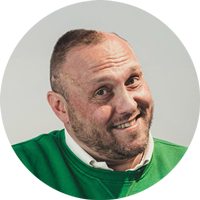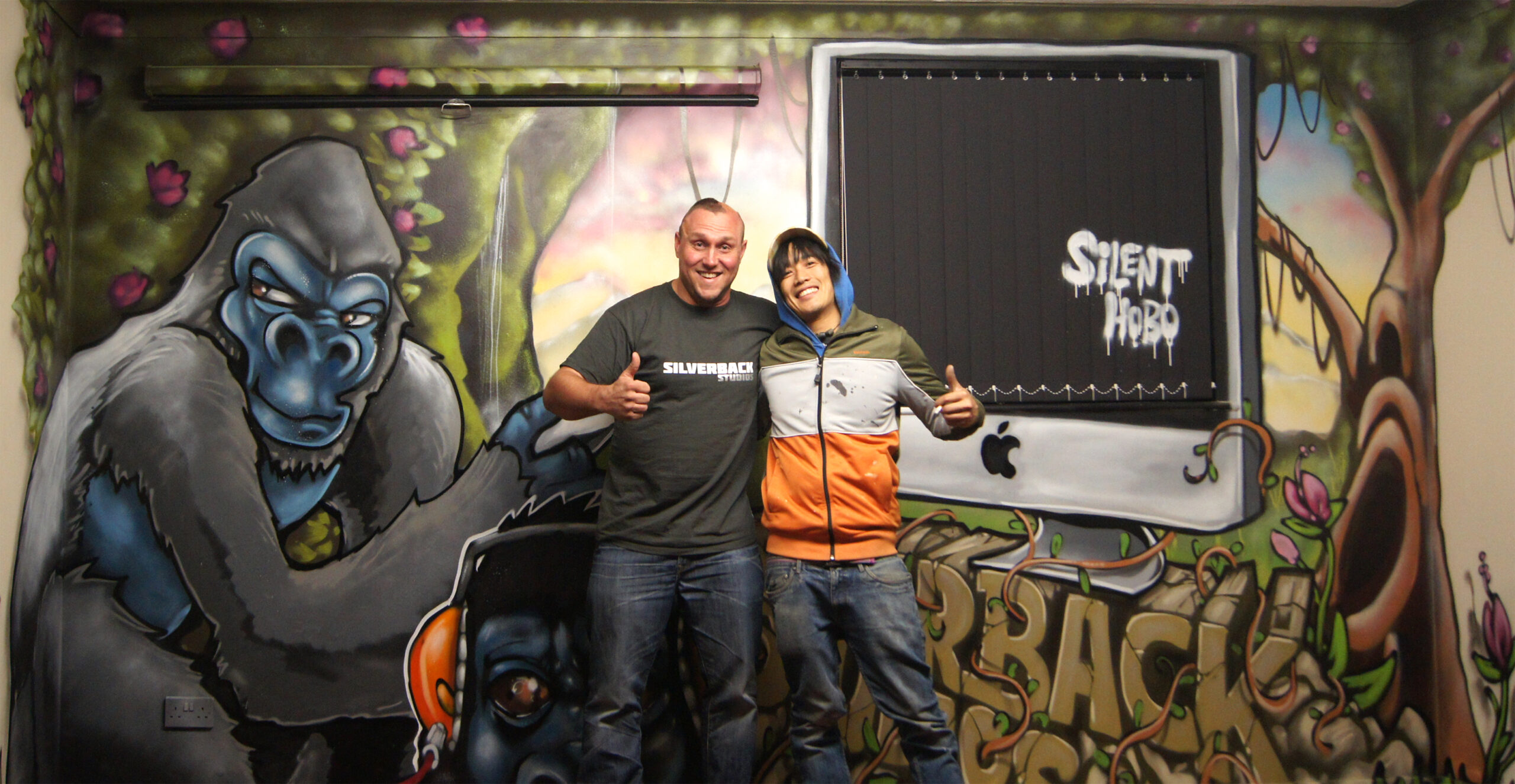There are a lot of online articles that share tips and tricks on how to build and grow a successful design agency and I’m sure a lot of them speak many wise words. But the truth is, nothing beats hearing it from someone who’s been there, done it, and yes, got the t-shirt.
So here we are. Welcome to my blog of the 10 lessons learned from 10 years of running an agency. Let’s get going, shall we?
Malcolm Gilbertson
MD & Creative Director
Never stop learning
This one’s a biggie, something that applies and is important to pretty much every professional on the planet but despite that, something a lot of people ignore. What am I talking about? Continuous learning, that’s what. You see, the day you wake up and think ‘I know everything there is to know’ is the day your business will stop moving forward. It’s as simple as that.
It doesn’t matter whether you’ve been in the game for two years or twenty-two years, you need to stay up to date with changes in your industry, technology and your audience. It’s the same for new trends, too. The last thing you want is to look outdated because you’re still obsessing over dark mode while your competitors are all over what’s current. Continuous learning is the only way to avoid this. So complete courses. Sit through webinars. Network. Read. Binge on your favourite podcast. It’ll all pay off – stay relevant.
Laugh as much as possible
Relationships matter at work. Whether it’s with your team, clients, contractors or suppliers — it’s important to be on the same level. To understand, respect and appreciate one another – have fun!
You hear a lot from the gurus living the ‘hustle’ lifestyle that you should keep people at arm’s length and only focus on yourself. But if I’m brutally honest — which, I always am — that’s a load of rubbish.
Building a strong relationship with your team is what matters most. Because, I mean, you’re with them every day, aren’t you? It’s those people who are putting in the hard graft to make your business a success. So it’s only right that you put in the effort to get to know them as humans, not just as colleagues. Trust me, it’ll pay off massively when it comes to building your business, because the more comfortable and valued your people feel, the better they’ll perform.
Treat it like a long-term relationship, not a one-night fling in front of the box. Do this, and there’s no reason why you won’t be friends (and colleagues) for life.
When things get crazy, it’s okay to take a breather
I know, I know, it’s stressful running an agency. One minute you’re going for a walk to chill out and the next you’re jumping for joy. In all seriousness, though, in the early days it’s so easy to get caught up in your to-do list and before you know it, you’ve worked a 15-hour day — and it’s the fifth time that week!
But that’s not good. A poor work/life balance can easily destroy you and your business. You’ve heard of burnout, right? Well, that’ll soon come knocking if you continuously overwork.
So set boundaries around when you work, and try your best to stick to them. Easier said than done, I know, especially when you have a deadline and you’re saying your clients’ names in your sleep. But try to give yourself a break. Take time to do the things you enjoy. Your body will thank you, your family and your friends too.
Sorry to break it to you, but it is all about the money
For as long as I can remember, I’ve always had a huge love for design. Probably too much, when I think about it. During the early parts of my career, money was a second thought — nothing more than a bonus.
But not anymore.
I’ve learned that if you want to take your business places, you need to be somewhat money-focused. To buy a bigger studio, you need money. To grow your team, you need money. To deliver big projects, you need money. To support local charities, you need money. Without being money-focused, none of this is possible – see it as a facilitator.
(By the way, when I say money-focused, I don’t mean money-obsessed. There’s a big difference.)
Be bold but have rationale
Identifying the right concept can be hard — especially if you mull over too many ideas and concepts. Or in other words, if you don’t sift out the crap and focus on the golden nuggets!
So my advice is this: find the golden concepts that work well with a good strategy behind them and then find what makes them effective and develop a creative that compliments it.
Focus all your time on two or three REALLY good ideas, rather than four or five average ones. As well as producing better results that hit the brief, it’ll come across less as confusing for your clients, too.
When working with your clients, it’s always good to have a safer option that nails the brief, and a more creative option that’s so good, as well as nailing the brief, it makes your client’s jaws drop.
This is where collaboration comes in. A good place to start is by briefing the designers properly so they understand who the client is, who the target market is, what the project is and most importantly, the why, what the purpose of this project is – check they understand and everything is clear. It’s important to not collectively brainstorm yet, ideas need time, let them go away, get inspired through research, create mood board and sketch up ideas. Then, once this is done, get together, discuss everyone’s work and start brainstorming. This is a recipe for a cracking concept – we call it strategic procrastination!
Trust your gut
Over the past few years, I’ve refused work because my instincts saw red flags. Things that might have damaged my business, or proven a bigger headache than a Christmas game of Monopoly when you’re in debt. When I first started, I ignored these instincts to my detriment. You live and you learn.
As an agency owner, you develop instincts over the years through working on lots of different projects for lots of different businesses. Listening to these can help you figure out whether a client is a good fit, for example, or how they might react to a specific piece of content.
Not only this, but trusting your gut with people can help you avoid negative culture, and a general negative energy in your business. This is important when making new hires, or bringing new people into a project.
Be true to yourself
Sounds simple, right? Like, does it really need its own point in this blog? Well, yes it does. Because you’d be surprised how many businesses get this wrong.
First off, to be true to yourself, you need to be real and consistent. You need to be true to who you are, what you do and who you serve. You need to have a purpose for your business beyond making a few bob.
Getting back to grassroots and remembering why you started is the best way to do this. Revisit your values, beliefs and goals. Do they align with what you’re currently doing?
Being true to yourself has a ton of benefits for your business. It makes you relatable, it makes you memorable, it builds a strong image, and it helps people understand what you’re offering. Not only this, but it’ll help you choose the right clients, hire the right people, and even get you out of a hole when you doubt yourself.
What’s also helped me, is making sure I hire people with a shared passion and purpose, focusing on culture, not skillset, when I hire. Because anyone can learn the skills, but it’s a lot harder to get someone on board with your culture.
Keep your head switched on
When I first started Silverback®, as with any other agency, we saw an influx of clients pretty quickly. I thought to myself, ‘this is easy, why didn’t I do it sooner?’. But then reality hit. Things quietened down. I started to doubt myself and my decisions.
But it was all for nothing. The problem wasn’t me. I hadn’t done anything wrong. It was just the reality of starting a new agency. This taught me a valuable lesson of not to be complacent and accept that, throughout your journey, there will be ups and downs — busy times and quieter times.
Being self-aware is another thing I’ve learned. Your actions as a business owner affect others and their output. While you need to lead the line, don’t get in the way. Let your team make mistakes and learn. It’s what they’ll need to progress.
Pen to paper before pixel
Does a bricklayer turn up to a job and start laying bricks? No, they don’t. They look at the plans first. Does a pilot just start up the engine and take off? No, they don’t. They check the route, weather and safety features first. So, with that in mind, why do so many designers jump on their computers at the first sniff of a new job?
Before you start designing, you should research, sketch and brainstorm first. Forget Adobe for a second. Fetch the pens, paper and whiteboard, and get all your ideas down. As well as aiding collaboration — which we already know sparks better results — it frees up space in your brain to focus on turning your good ideas into great concepts.
Work with your clients
We work with brands that are up for a challenge, get how important design is and want a collaboration (not the cold shoulder and then a big fancy one-sided presentation). The last point is key.
You see, no matter who you’re working with, they’ll know their business best. They’ll also have a better understanding of their vision, mission and values. So it makes absolute sense to create with them, rather than alone. As well as achieving better results, collaboration helps you build long-lasting relationships too. That’s something we should all get behind.
Let’s have a chat…
"*" indicates required fields

 Articles
Articles 


